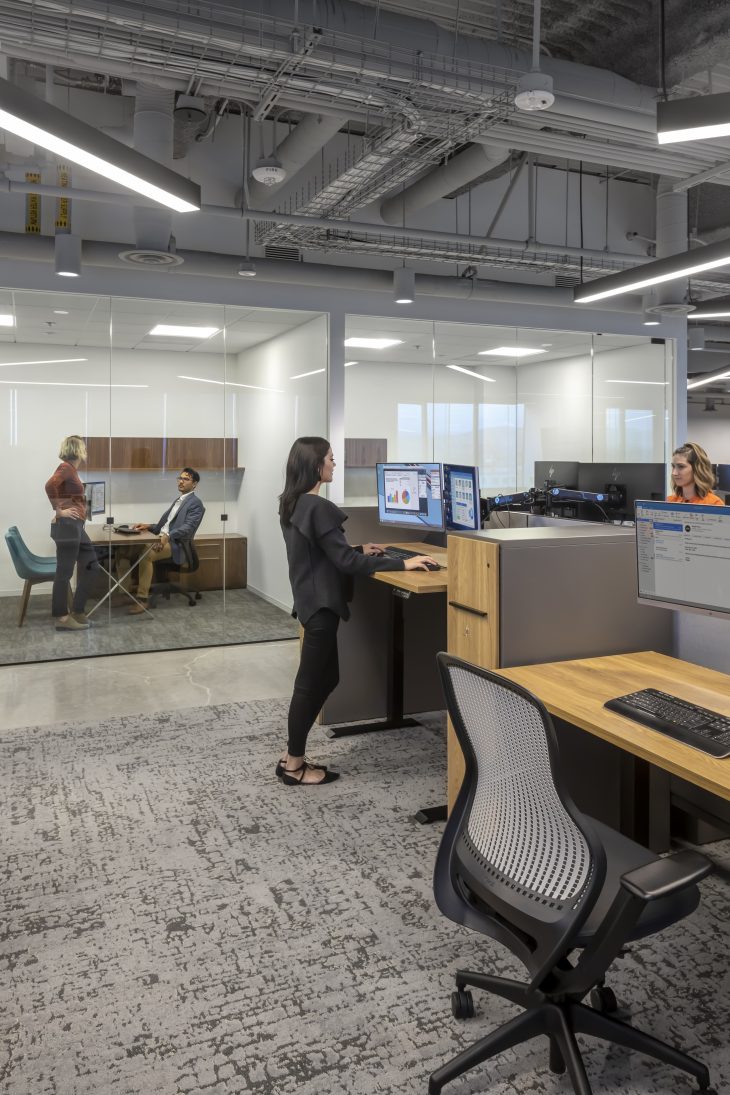The healthcare industry as we know it is expected to make a dramatic shift by 2040, according to Deloitte. Significant technological advances are transforming our thinking from health “care” to health “maintenance,” placing a larger emphasis on detection and prevention rather than treatment.
How will all this impact the corporate office? The short answer is that it will demand a new iteration of workplace wellness and design, one in which employees play the leading role in making their health and wellness decisions. Future workplaces will require a new level of wellness integration and health-promoting technology well beyond onsite fitness facilities and biophilic design to truly enhance employee well-being and dramatically reduce already-rising healthcare costs.
WEARABLES AND SENSOR TECHNOLOGY
Healthcare costs are a company’s second-largest operating expense after employee wages. With this cost projected to double by 2030, employers are feeling the pressure now to seek out solutions that mitigate the hidden costs associated with poor employee health, such as turnover, lack of productivity, and disengagement.
Mitigating solutions include wearables and sensor technology, which is projected to be a 560-million-unit market by 2021. Medical sensors are able to measure and analyze a user’s heart rate, blood pressure, and blood-sugar levels. They can tell users when it’s time to take a break and “sharpen the axe” to ultimately increase workers’ productivity and efficiency.
These sensors are already mainstream in the consumer world, and we can anticipate that companies will implement them in future office designs. This technology puts overall health at the forefront of employees’ minds, enabling them to take control of their own well-being by informing them of their individual markers for health and wellness, including levels of stress that negatively affect performance.
With the goal to promote employee’s health and wellbeing, the workstations at One Digital are built with ergonomic furniture including height adjustable sit-stand desks.
PHYSICALLY SUPPORTIVE SPACES
An active workplace and a layout that supports movement is a step in the right direction. The benefits can be amplified through the use of medical sensors that capture data and offer real-time recommendations to manage the health and wellness of users.
Physical activity has become a primary focus of public health. The rise of premature mortality and chronic diseases, including type 2 diabetes, cardiovascular disease, depression, stroke, dementia, and some forms of cancer, are linked to physical inactivity.
One Digital and ZO Skin Health are two recently completed activity-supporting projects in Irvine, California. Both layouts incorporate well-defined walkways for “walk and talk” meetings with additional areas for taking conversations outside. These types of interactions are becoming more popular. Evidence suggests that walking increases cognitive engagement, creative thinking, and honest exchanges.
As workplace designers focusing on wellness, it is our responsibility to consider the risks of physical inactivity and find design solutions that encourage healthy habits and provide opportunities for employees to take charge of their own well-being.
MENTALLY SUPPORTIVE SPACES
Many workplaces today feature coworking spaces and open office environments to encourage collaboration. While these spaces foster teamwork and inspire creativity, research shows that employees in open office environments lose on average 86 minutes a day to distraction. Not to mention, it takes workers nearly 25 minutes to regain focus once disrupted. In order to get the most out of their collaboration spaces, employers will need to create designated places within the office that mitigate distraction and promote invigoration.
High-functioning offices also require a variety of spaces that support individual focus and restoration. The WELL Building Standard identifies stress as a source of community health problems, general burnout, depression, and lowered overall human activity. In order to mitigate stress, workplace design must include invigoration areas where individuals can benefit from restorative experiences. Allowing employees time and space to recover after common low-grade stresses—such as meetings, tense interactions, and heavy workloads—can ease the mind and heal the body for optimal performance.



